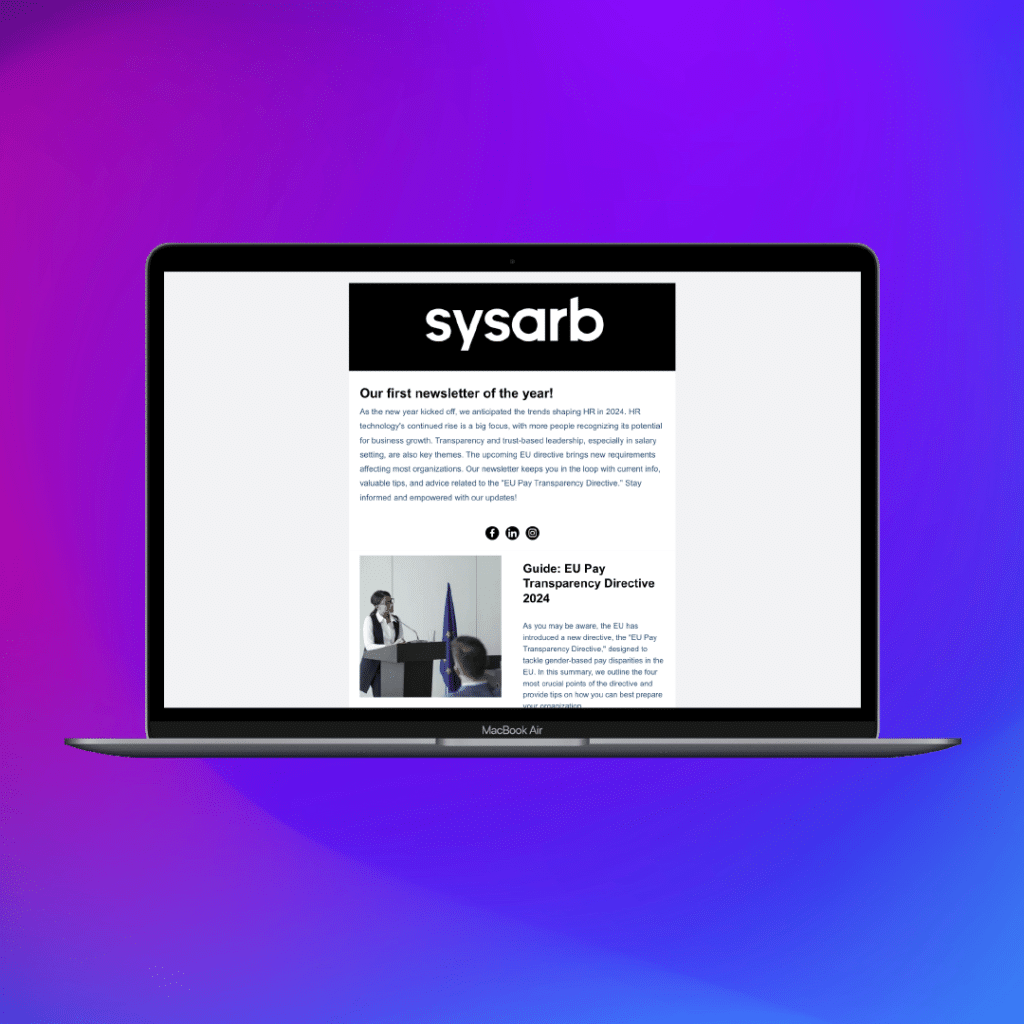- Product
- Pay Equity AnalysisExplore our groundbreaking AI-powered Pay Equity module.
- Salary ReviewOptimize your Salary review & performance management process.
- Pay Equity ConsultingOur Pay Equity experts will support you through your fair pay journey.
- Job architectureElevate your workforce with our Job Architecture Framework.
- Benchmark AnalyticsGain a deeper understanding of your compensation structures.
- Pricing
- Case
- Integrations
- Pay Transparency
- About Us
Guides
2 min
Published: 2023-05-05
Guide: EU Pay Transparency Directive 2024
“Equal pay for equal work” has been a fundamental principle in the EU since 1957, yet according to Eurostat, the EU’s statistics agency, women in the EU still earn an average of 13% less than men. To address this challenge, the EU has developed the “EU Pay Transparency Directive” which aims to address unwanted pay disparities in the EU based on gender.

4 steps – EU pay transparency directive guide
We have summarized the four main points of the directive and how you can prepare for 2024.
1. Job architecture & career development
Employers need to develop processes and methods for comparing work of equal value through gender-neutral and objective criteria. Examples of criteria may include: education, requirements for social skills, requirements for experience, level of responsibility, etc. Employers also need to be able to present salary ranges during recruitment and are prohibited from requesting and including an employee’s salary history in setting pay. Employers also need to be able to present gender-neutral career paths for employees. To meet this requirement, a job architecture is needed that includes career paths, salary ranges, and clarity on the internal structure between different positions and job families.
2. Right to information
Employees have the right to request information on pay setting in the organization where aggregated pay data for equal and equivalent work based on gender must be provided. To meet this requirement, the organization’s job architecture is a prerequisite, but data must also be structured systematically, preferably in a digital platform such as an HR, salary, or salary assessment tool where reports and data can be easily exported.
3. Public reporting
Employers (from 100 employees) need to present salary statistics publicly where the following key figures are included: Pay Level Pay Gap (median) Pay Gap (mean) Median Pay level Quartile pay gap Gap based on equal pay for equal work to meet this requirement, it is recommended to review the process of salary assessment and to develop a system for producing and presenting these reports and key figures.
4. Salary assessment (Joint Pay Assesment)
If the pay gap exceeds 5% in any group, a salary assessment must be carried out to map out the pay gaps and whether they are due to gender or other factors. To meet point four of the directive, the employer must have implemented a process for salary assessment that includes both gender and other factors and is able to demonstrate how pay gaps are calculated and the impact of any identified pay gaps.

Download our guide
To explore the new EU directive on pay transparency, access our complete guide by clicking the link below.

Subscribe to our newsletter
Get the latest updates within HR and learn more about what we are passionate about – fair wage practices.
Continue reading

Insights
Shifting from Reactive to Proactive: 5 Strategies for Employers to Prevent Discrimination
In the European Union, a commitment to diversity and inclusion in the workplace is not just a cultural value but...
2 min
Read more

Insights
How to Overcome Gender Bias in the Workplace
Believe you’re free from bias? Think again. Unconscious bias refers to prejudices we unknowingly hold, influencing our perceptions of others’...
3 min
Read more

Insights
How to Close the Gender Gap: The 5-Step Checklist
1. Understanding the Gap The story begins with a reality check from the 2023 Global Gender Gap Report. It shows...
2 min
Read more